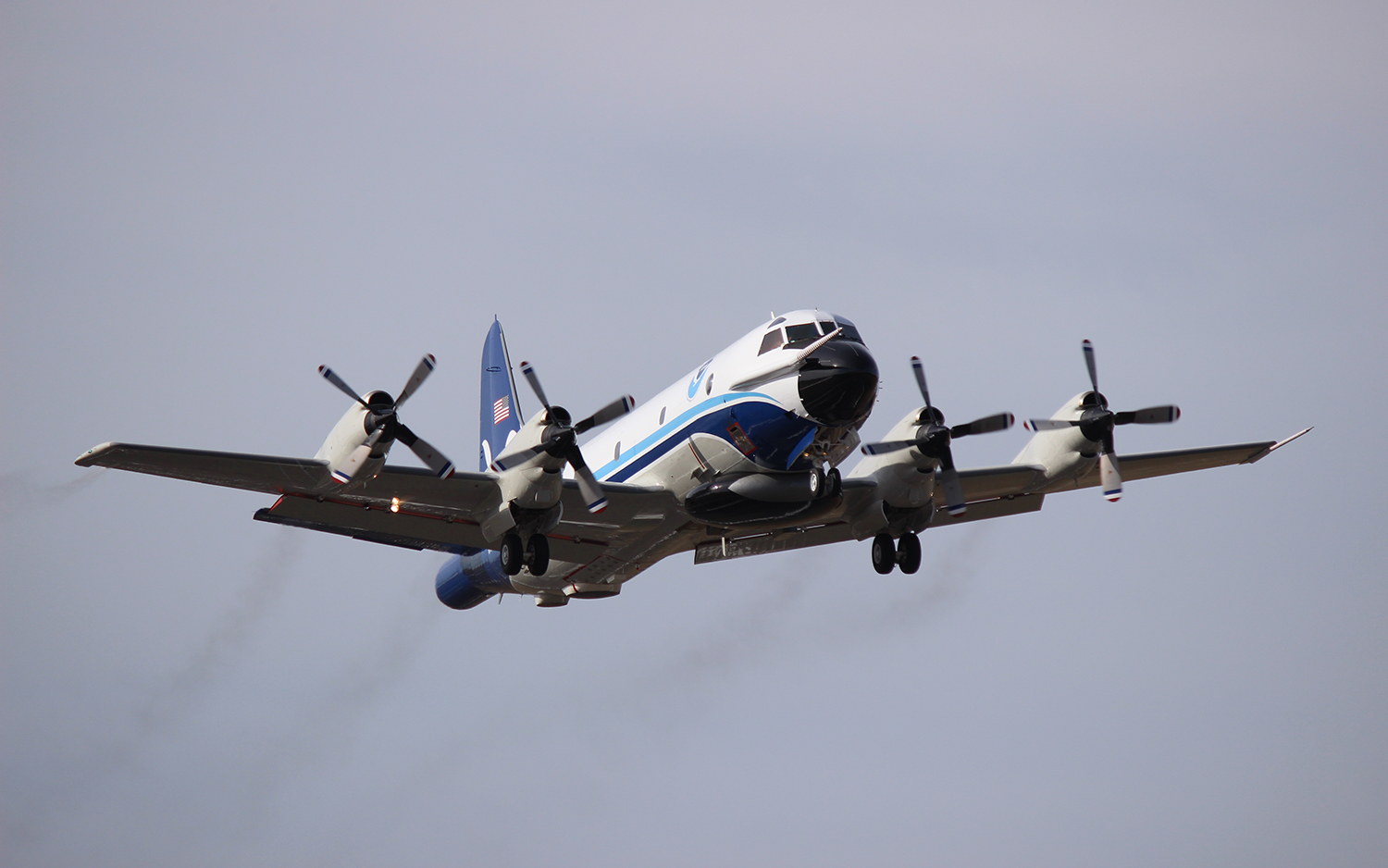A Hurricane-Hunting Plane Flies Straight Through Florence's Eye, Captures Harrowing Video
Time-lapse footage showed the aircraft surrounded by dense, gray clouds, then breaking through them into an eerily still center with a brilliant blue sky overhead. The deceptively calm eye lies at the heart of the most powerful storm to date in the 2018 Atlantic hurricane season. [Hurricane Season 2018: How Long It Lasts and What to Expect]
When a storm as powerful as Florence is approaching land, people in its path typically either hunker down or try to get as far away from it as possible. But scientists with the National Oceanic and Atmospheric Administration (NOAA) take a different approach — they fly directly into the centers of massive hurricanes in specialized four-engine aircraft called Hurricane Hunters. As they fly in and out of the hurricane's eye, researchers can collect valuable data on the storm's speed, intensity and structure, according to NOAA's Hurricane Hunters website.
While the Hurricane Hunter planes have whimsical nicknames — Kermit and Miss Piggy, after the lovable Muppets — their missions take place under dangerous, grueling conditions. Each hurricane-investigating flight lasts approximately 8 to 12 hours, and to reach the storm's eye, the aircraft must first penetrate lashing rain and howling winds.
Throughout this harrowing journey, the researchers on board drop cylindrical GPS instruments called dropwindsondes, which drift through the hurricane in the plane's wake. As the devices fall toward the ocean, they transmit critical readings on wind direction and speed, air pressure, temperature and humidity, from positions throughout the hurricane.

Not only do these readings enable scientists to better predict how a particular storm could behave — the data assembled from every mission also helps researchers to put together a clearer picture of hurricane formation and development, improving preparation for future storms, according to NOAA.
Hurricane Hunter and aerospace engineer Nick Underwood captured the incredible video footage from inside Florence's eye, aboard the Lockheed WP-3D aircraft known as Kermit. Underwood shared the time-lapse footage in a tweet earlier today, writing "This is probably the coolest thing I’ve filmed."
Another video that was shot aboard Kermit on the same mission by Heather Holbach, a post-doctoral researcher with NOAA's Hurricane Research Division at the Northern Gulf Institute, shows a longer view of the plane's perspective from inside Florence's eye. A wall of white clouds rises around the aircraft, with the sun and blue sky visible overhead.
Sign up for the Live Science daily newsletter now
Get the world’s most fascinating discoveries delivered straight to your inbox.
Other equipment on the Hurricane Hunters measure ocean temperature, which can hint if a growing storm might be further fueled by the presence of warm water. Microwave instruments on the planes also track wind speeds and rainfall directly over the ocean surface, providing valuable data about potential storm surges — a leading cause of deaths during powerful storms, according to NOAA.
Original article on Live Science.

Mindy Weisberger is an editor at Scholastic and a former Live Science channel editor and senior writer. She has reported on general science, covering climate change, paleontology, biology and space. Mindy studied film at Columbia University; prior to Live Science she produced, wrote and directed media for the American Museum of Natural History in New York City. Her videos about dinosaurs, astrophysics, biodiversity and evolution appear in museums and science centers worldwide, earning awards such as the CINE Golden Eagle and the Communicator Award of Excellence. Her writing has also appeared in Scientific American, The Washington Post and How It Works Magazine. Her book "Rise of the Zombie Bugs: The Surprising Science of Parasitic Mind Control" will be published in spring 2025 by Johns Hopkins University Press.










